Common Conditions
■ Total Knee Arthroplasty
■ Knee Ligament Reconstruction
■ Total Hip Arthroplasty
■ Patellar Tendon Medialization
■ Degenerative Arthritis
■ Patellofemoral Pain Syndrome
■ Thigh Muscle Atrophy
■ Limitation of Motion
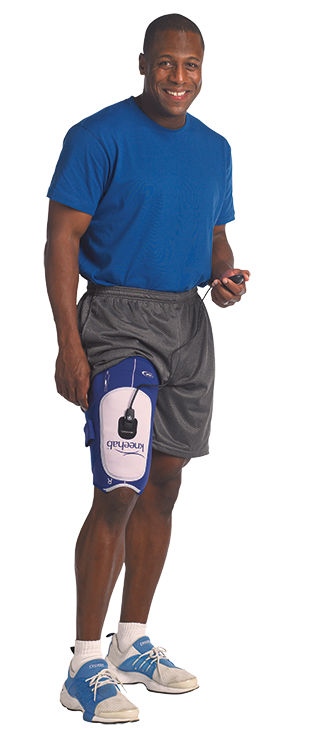
■ Total Knee Arthroplasty
■ Knee Ligament Reconstruction
■ Total Hip Arthroplasty
■ Patellar Tendon Medialization
■ Degenerative Arthritis
■ Patellofemoral Pain Syndrome
■ Thigh Muscle Atrophy
■ Limitation of Motion
INNOVATION TO ADDRESS CHALLENGES
More than 25% of trainees experience injuries and injured soldiers are 3x more likely to be discharged.2
Musculoskeletal injuries are the primary reason soldiers are unable to deploy, affecting force readiness and deployability.3
Approximately 1 in 3 Veterans with a service-connected disability reported that at some point it interfered with getting or holding a job.4


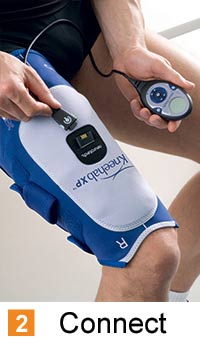
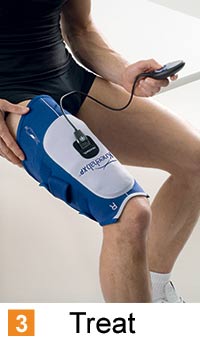
Markings on the outside of the garment help ensure correct placement on quadriceps muscles.
Simply connect the controller to the conductive garment and begin treatment.
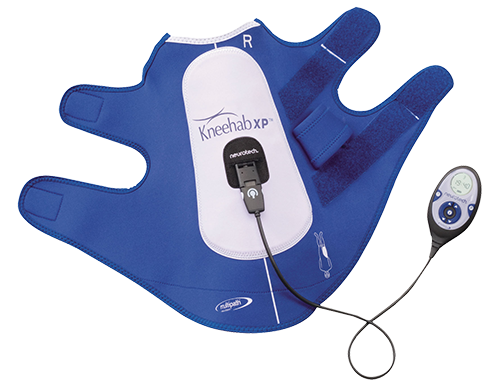
Kneehab is perfect for home use or for people on the go.
This convenient controller comfortably fits in your hand or in a holster on the garment, and the long-lasting battery is rechargeable.
Multipath™ Stimulation Technology delivers highly focused, accurately coordinated muscle contractions.
Eliminate the need for lead wires and the guesswork of properly placing electrodes.
Gel pads 4-times larger than 2”x2” electrodes provide better muscle coverage and improve patient comfort.8
Large gel pads provide better muscle coverage and recruitment.


Standard Electrodes
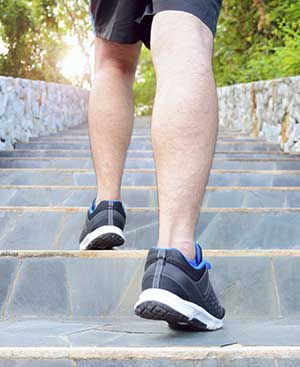
In a clinical study, Kneehab patients significantly improved their knee stability during the first 90 days after surgery.
Kneehab patients regained lost quadriceps strength and surpassed knee extension strength of their uninjured leg within 12 weeks after surgery.

Annual VA disability payment for a 10% rating due to knee pain from patellofemoral pain syndrome5
The high cost of missed basic training due to injury (7 days x $366.03). Daily training cost source: U.S. Air Force2
Average health care cost increase for TKR patients diagnosed with muscle atrophy/weakness prior to surgery6
Cost to recruit, screen, and initially train a single enlistee – drawn from an increasingly sedentary and less physically fit population2,7

This information does not imply or constitute an endorsement from the U.S. Department of Defense or the U.S. Department of Veterans Affairs.